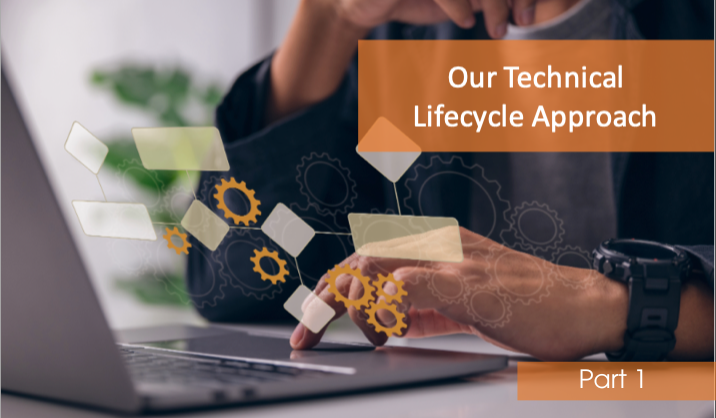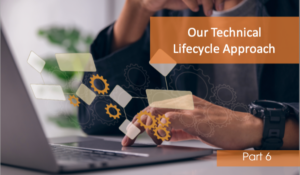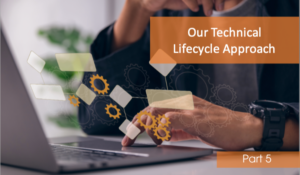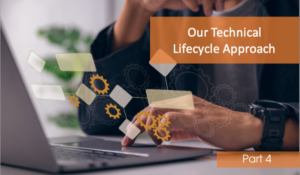Stage 1: Triage – how we assess your request
This is the first of our deep-dive articles to walk our customers through our new Technical Delivery Lifecycle approach, which we’ll implement in early 2024. If you haven’t already, please read the introductory article first. It will give you an overview of our approach, why we’re adopting it, and how it will help ensure better outcomes for you and your organisation.
What is Triage, and why are we doing it?
The essential first stage in our Lifecycle approach is Triage, which we will undertake for every piece of work we do for you. Essentially, it’s about assessing how ready we are to move to the Build stage of our Lifecycle (see diagram below) – and how quickly we can get there.
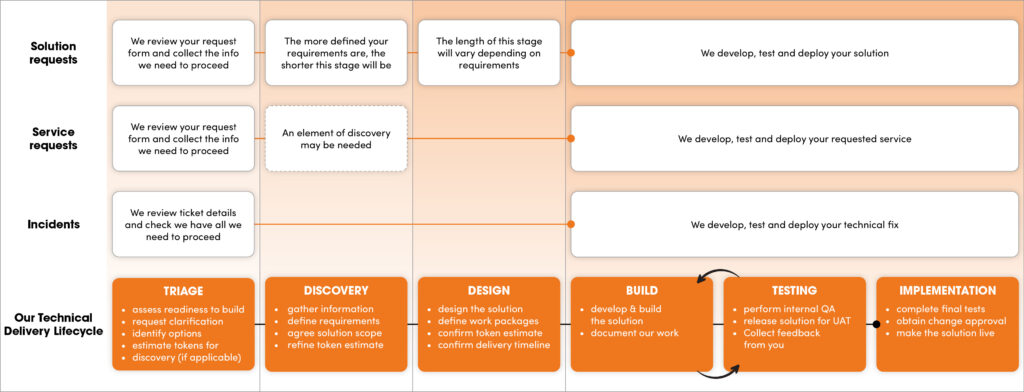
The key questions we will ask during triage are as follows: Do we have all the necessary information we need? And, if not, what must we do to obtain it?
We believe that this step in the process is mission-critical. If we don’t do it, this can lead to some big problems later on – so it’s worth taking the time upfront to ensure we do it effectively.
What’s more, we can use this time to start identifying some high-level options and (where applicable) provide you with an estimate of the number of tokens that will be required based on the amount of work we’ll be expecting to undertake.
What happens during and after Triage?
In every case, we’ll ask you to fill in a request form, which we’ll review. We’ll then collect any further information we need (more on that further down). What happens after that will depend on the kind of request you’re making, as follows:
For solution/development requests: We’ll proceed to Discovery, the next step in the process.
For service requests: We’ll be able to proceed rapidly towards the Build stage, but an element of Discovery may be needed before that.
For incidents: We’ll proceed directly to the Build stage.
How will we gather the information we need?
We’re in the process of improving our customer portal, which will help you provide us with all the information we need from the outset. We’ll do this by asking you a series of questions and directing you to provide information in a specific way.
We might request more information from you or clarification of something you’ve already told us to give us a better understanding of your requirements.
We may also ask you to provide us with information in a specific format or even to demonstrate an issue for us in real-time.
How can you help us to help you?
For solution requests, in particular, you can help us by sharing any internal requirements documents you may already have produced. These might be, for example, user stories, process maps or even procedural documents.
How can you find out more?
Over the next few weeks, we’ll publish our series of articles, taking a deeper dive into each step of the process so you can understand what this approach will mean in practice for you and your organisation. (Watch out for an email landing in your inbox every week, alerting you to the publication of the latest article.)
The following article will be about the Discovery stage.
Rest assured, before we launch our Lifecycle approach, we’ll meet with you to walk you through the changes and give you the chance to ask any questions.
But if you’d like to discuss any of this with us in the meantime, please don’t hesitate to get in touch.
07 February 2024
